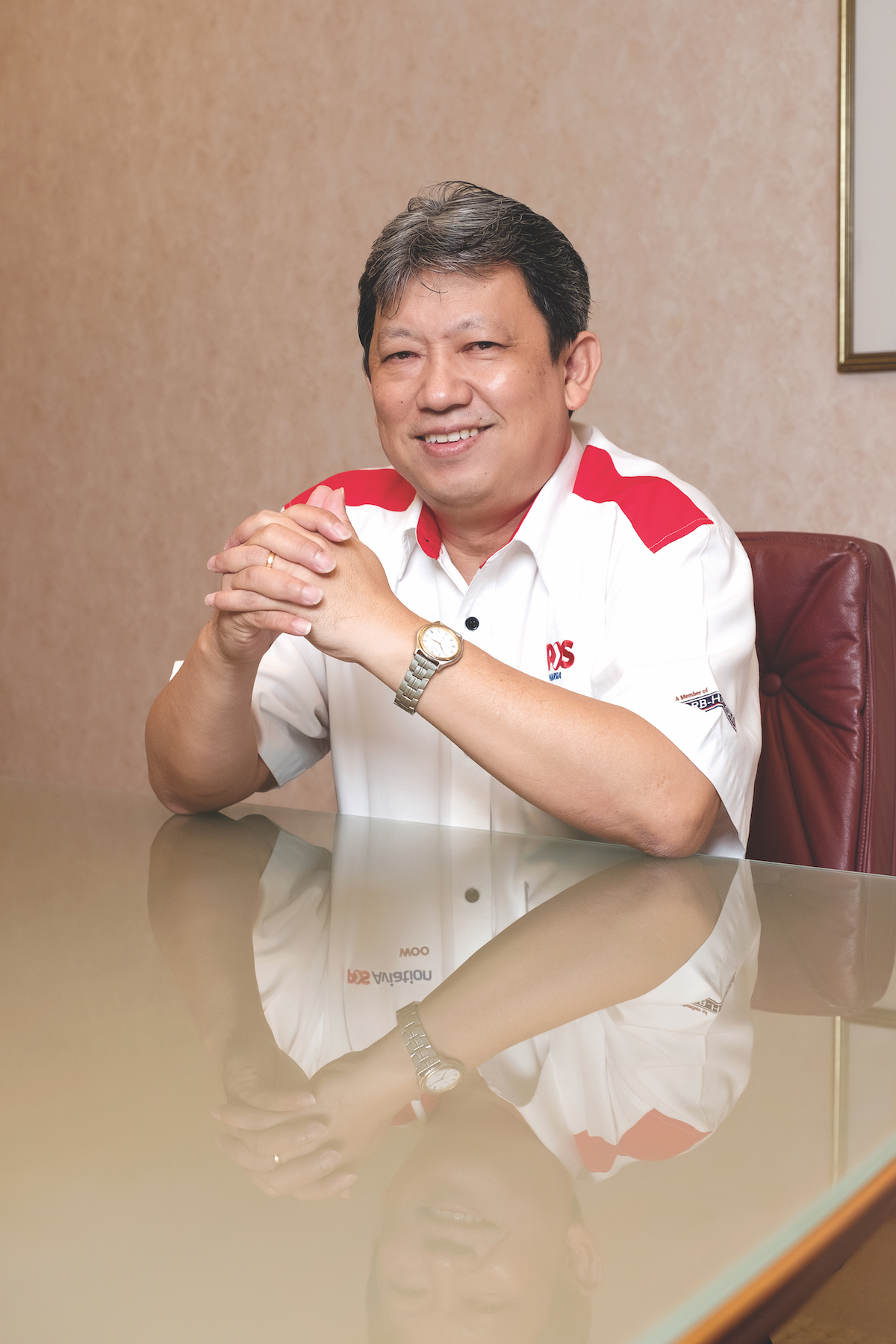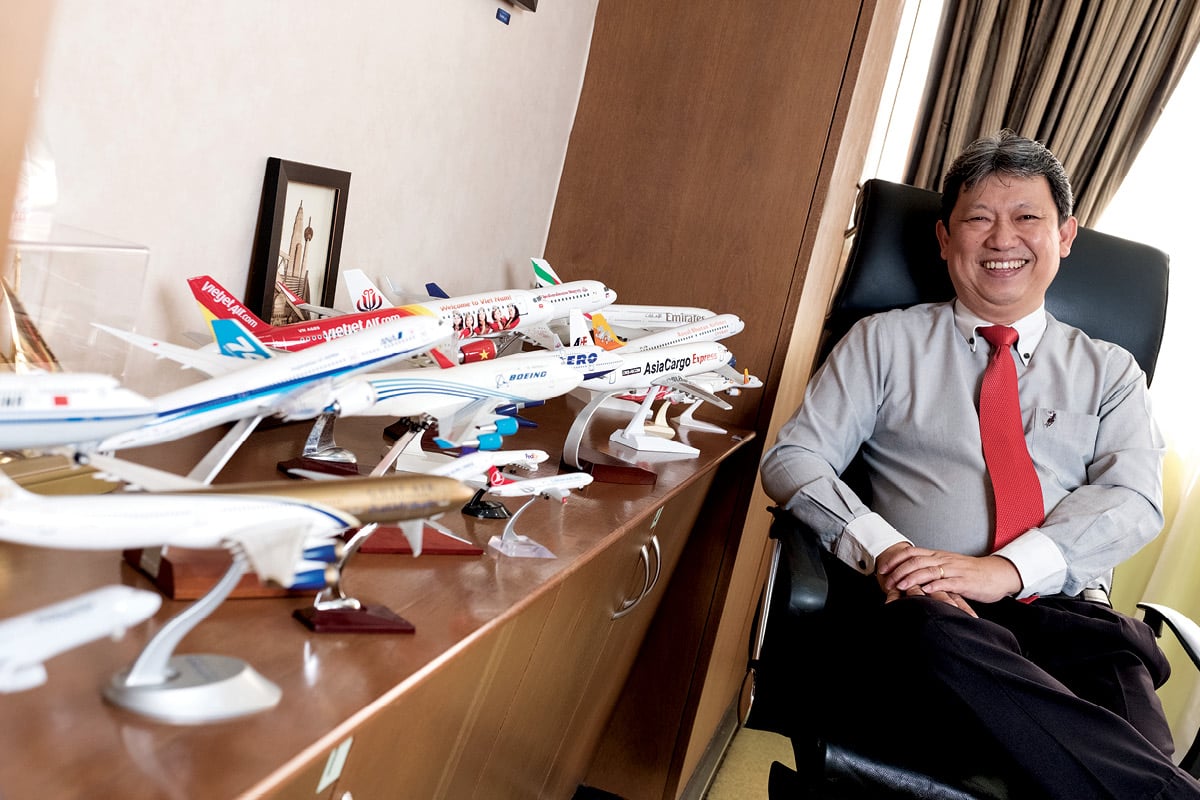When Malaysia’s national postal service, Pos Malaysia, announced its earnings for the financial year ending 31 March 2017, it stated that it rose 21% on the previous year mainly due to its acquisition of KL Airport Services (now Pos Aviation) in 2016. Commenting on the results, Pos Malaysia Group CEO Mohd Shukrie Mohd Salleh said its prospects in the medium term were incredibly positive due to the continuing growth in ecommerce as well as the Malaysian Government’s increased investment in transport infrastructure.
That bodes well for Woo Kam Weng, who became the CEO of Pos Aviation in February this year. On the ecommerce front, Pos Aviation is currently in the final stages of establishing a regional distribution hub for Lazada, of which Chinese ecommerce giant Alibaba has majority ownership, and will operate and manage the facility to support the region through air and land logistics capabilities.
The main challenge, according to Woo, is in making sure that Pos Aviation has a seamless service that provides all the multimodel logistical solutions to the ecommerce players in the industry.
Pos Aviation provides end-to-end solutions
“Now that we’re all integrated under Pos Malaysia, we can provide a seamless, one-stop solution to a lot of the ecommerce players. That is where the real advantage lies with us being under the Pos Malaysia banner,” he says.
“That’s why when Alibaba thought up the idea of setting up a regional distribution centre within South East Asia, it chose Malaysia – because we have the facilities, and we have the one-stop solution that can meet all the requirements.”

Pos Aviation was founded as KL Airport Services in 1995 and was wholly owned by DRB-HICOM, a conglomerate with a major presence in the automotive, service and property development sectors. In 2011, DRB-HICOM won a bid to acquire a 32% stake in Pos Malaysia.
Then in 2016, DRB-HICOM disposed of certain assets, including KL Airport Services, to Pos Malaysia. Through the share swap, KL Airport Services became a subsidiary of Pos Malaysia and was renamed Pos Aviation, in exchange for DRB-HICOM increasing its equity in Pos Malaysia from 32% to 53%. “Now that we are under Pos Malaysia, we have an aviation sector that can provide a fully integrated, multimodel logistic supply-chain solution,” says Woo.
Pos Aviation’s business ownership structure is unique, with Woo noting that there aren’t many examples where a national postal service is able to provide end-to-end solutions for an industry, whether that be B2B, B2C, or even C2C. “Of course, the challenge is that we ensure all this works well together, under the one banner, integrating all the different work cultures and company infrastructures, and getting everyone aligned in the right direction,” he says.
Woo Kam Weng makes the move to business development
Woo initially trained to be a licensed aircraft engineer for Malaysia Airlines, joining KL Airport Solutions in May 1997. “When I was in engineering, of course, everything was very logical, full of ones and zeros,” he says. Over time, Woo crossed into sales and marketing and business development which, he believes, “has more shades of grey” than engineering.
Ever since, he has acquired knowledge of the different segments of the ground handling business, from inflight catering to cargo, to passenger handling and, more recently, ecommerce. “I’ve seen myself change from a very structured, logical person to someone with more of a business-development mindset,” he reflects.
I’ve seen myself change from a very structured, logical person to someone with more of a business-development mindset.
While he initially struggled with the transition, Woo believes an innate curiosity to learn, know and understand has served him well over the years. “The passion to learn helps me adapt very quickly,” he says. “I would say that it’s much easier as an engineer to move to other parts of the business than the other way around.”
It is this ability to change and adapt that Woo will need to draw on as automation rapidly transforms how airports are run, considering the disruption it has already wreaked on the taxi industry through services like Uber and Grab.
Revitalising key assets
In response to the automation trend, Pos Aviation has begun focusing on revitalising its key assets. As an example, it is looking at developing apps that can automate some parts of the customer experience, believing that many of the roles that are currently man-managed can be improved upon by adding tech to the experience.
“Instead of being frustrated after 10 hours of flying, losing your bags, and then having to line up behind 10 people, you just scan your code and the app can automatically send it to your next location,” explains Woo.
This is only one example where ground handling will go through a substantial change in the next few years, where passengers will no longer need to be served in person.
“We will also move more towards machines, self-service check-in and web check-in, and we just need to position ourselves with the technology and adaptation of IoT [Internet of Things] to enhance the customer experience through the use of those technologies,” he says.
The automation revolution in airports is already here
While airports around the world continue the march towards creating a fully automated airport terminal, Woo says many passengers in South East Asia have not quite fully adopted services such as web check-in, and are still arriving at the airport several hours before their scheduled flight. He believes more needs to be done in conjunction with the authorities, whether they be local, airport or immigration.
“Security will always be the number one priority when it comes to air travel. Unfortunately, it has also become a very big hurdle to a lot of potential innovations, purely because of all the concerns around passenger safety,” says Woo.
“Features such as facial recognition can be incorporated, but the obstacle is that the various stakeholders within the airport environment are not really working together to do it. Even IATA [International Air Transport Association] is moving a bit too slowly to adopt some of these innovations.”
That said, it is undeniable that the automation revolution in airports is not just coming; it is already here. Pos Aviation understands this, asserts Woo, and its people have the skills and knowledge to be able to move forward, adapt to the changes, and be ready for what’s next over the coming years. Its fortunes could very well depend on it.
The airports of the future
The newest airport technology will not only make the passenger experience much faster, but safer as well. Singapore’s Changi Airport, rated by Skytrax as the world’s best airport from 2013 to 2017, introduced a S$50 million Living Lab program earlier this year to help drive the latest airport solutions for the next five years.
Below are just three of the many technologies being applied to passenger terminals all over the world. Be on the lookout to see if these technologies are being used the next time you board your scheduled flight.
-
Biometrics
Aruba International Airport was the test location for the Happy Flow project, piloting biometric applications such as facial image identification, meaning travel documents only need to be presented once at check-in.
As a result, a passenger’s journey through airport security can be drastically shortened. As well as facial recognition, other potential uses of biometrics at airports include vascular technology, normally used in the medical space, and even embedded chips have been suggested as a possibility.
-
Robotics
While robots are already used for tasks like baggage handling and car parking, they are more recently being applied for customer-facing functions. In 2016, Tokyo’s Haneda Airport introduced the Robot Experiment Project to assist businesses and research organisations with testing and data collection of robot technologies within airports.
Seventeen prototype robots, bearing names like F.ROBOCLEAN, CarriRo and Pepper, specialising in three different fields – cleaning, movement support and guiding – were selected by the Haneda Robotics Lab for the project.
-
The Internet of Things
London City Airport received a grant in 2013 to implement a 12-month research project to better understand the potential of IoT. Increasingly, more assets within airports, including queue-measuring sensors and Bluetooth low-energy beacons, are being connected to the internet, creating a fully linked network, effectively an ‘internet of things’.
IoT is becoming instrumental in providing passengers with up-to-date information about
their flight as well as airport processing. It is also helping airports and related organisations to better manage resources, such as airport equipment used to service both departing and arriving flights.

